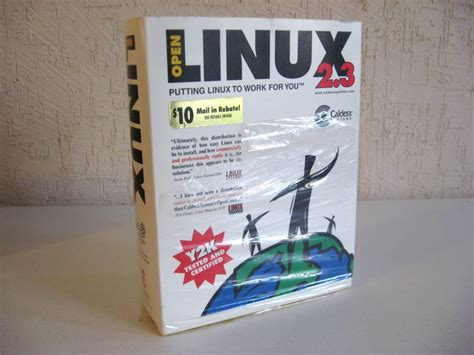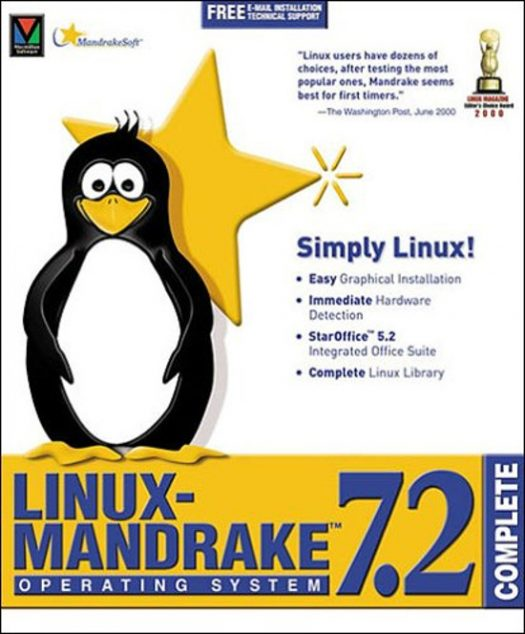Ubuntu’s popularity often makes it the default choice for new Linux users. But there are tons of other Linux operating systems that deserve your attention. As such, I’ve highlighted some Ubuntu alternatives so you can choose based on your needs and requirements—because conformity is boring.

targeted at regular desktop users
While Slackware and Debian are the oldest still-maintained Linux distros, I don’t think either had a desktop-first approach.
I considered putting logos of some of the many more user-friendly pre-ubuntu distros in the meme but was lazy.
Debian was intended to be for regular desktop users back then too, though.
…Except Debian wasn’t even user-friendly when I used it two years after Ubuntu’s release. Red Hat Linux (not RHEL, which came later) was the only distro I’m aware of before Ubuntu that was more UX-focused.
Edit: I forgot about a few others — SUSE, Corel Linux, Lindows/Linspire, and others. Buuuuuuut most of those distros don’t exist anymore. I still stand by that Debian didn’t used to be as noob-friendly as it is these days.
SUSE?
I forgot about Corel Linux and Lindows as well now that I think on it.
one of the first
there were dozens of others in the 11 years between the first and ubuntu
“Targeted at regular desktop users”
I really feel like you’re missing the idea of that sentence deliberately.
What Linux distribution came before Ubuntu that was specifically designed to be user friendly for a non-technical user?
What Linux distribution came before Ubuntu that was specifically designed to be user friendly for a non-technical user?
There were a bunch of distros advertising ease of use; several were even sold in physical boxes (which was the style at the time) and marketed to consumers at retail stores like BestBuy years before Ubuntu started.
Here are four pictures of the physical packaging for three of those pre-ubuntu desktop distros designed to be user friendly and marketed to the general public:




Ubuntu was better than what came before it in many ways, and it deserves credit for advancing desktop Linux adoption both then and now, but it was not “one of the first” by any stretch.
No one ever recommends OpenSuse…
It is problematic in my experience. I think it comes down to Suse as a company lacking direction
Yeah exactly this. Not only lacking direction but the Upstream SUSE recently decided to move away from traditional desktop. Instead, they now offer ALP, which stands for adoptable linux platform. So OpenSuse has no real dekstop products to build of, and the community has to do much more work in order to produce a stable desktop distribution. I was a happy user for a almost 2 years, but in that time the community had discussion about many “small” things, many of which were about “principles”. This made ne very uncomfortable in using it, since it felt that every moment the “community” would decide something that would significantly change everything.
Fuck, now I wanna distro hop
Ubuntu is not even good in my opinion. At least not as a normie Distro.
Yes they have lots of docs online but “it is good because people think it is good” is not a good argument.
If you dont like GNOME I guess you will have a harder life anyways, as Distros with KDE are just a really hard task. Like anything stable is not a good idea, I at least reported 30 bugs that will never get backported fixes.
The fact that appimages are broken on Ubuntu is like the only thing that I completely understand and dont care about. Appimages needs to get their stuff together.
I hope many projects will convert from Appimage to Flatpak
why are distros with KDE a really hard task? users who want customizations will have a horrible time with gnome
That are two unrelated or even contradictory scentences.
Gnome is waaay more reduced, so it has less bugs. It will work way better on stable Distros.
Also because of some things (KDE 4.0?) GNOME became the default Desktop, and Distros orient at its release cycles.
KDE has so many bugs and fixes that I think calling 5.27 “stable” is misleading.
KDE is default on some distros and is supported directly as a variant on most major distros so I wouldn’t say GNOME is the default.
But my point is that at least some of the appeal of desktop linux is customization, and GNOME will be a disappointment for the users looking for that.
Otherwise I agree vanilla GNOME is rock solid and great for new users!
I meant “shipping a KDE Distro is a hard task”, that should be more clear. For sure, KDE forever. GNOME is either CLI-only (even for basic settings) or install tons of apps that only do one thing (ThE UnIx pHiLoSoPhY) or dont change anything.
I hope many projects will convert from Appimage to Flatpak
They seem like different projects with different goals. Appimages are portable executables.
Flatpak, to me, is something you install on a system and run with a flatpak runtime that is installed on your PC. I think its a fantastic way to sandbox programs with differing dependencies, but you still install programs and run them on your PC.
Appimage, on the other hand, is a wholly-contained executable. It is less efficient than flatpak in every way if you are installing apps on a system, but it is more portable. I can throw a handful of appimages on a USB stick and carry them from machine to machine (or mount an ISO in the case of VMs). I can plug in my “troubleshooting and development” stick to an otherwise barebones server at my datacenter, fix an issue with a comfortable set of useful apps, then unplug and leave the machine untouched.
Appimage is not a replacement for flatpak, but it has its own purpose. Snap is more similar to flatpak, but inferior in every single way. If we must get rid of one, can we phase that one out?
I mean, in theory you could also put flatpaks onto a usb stick and symlink the directories. But nobody really does that.
But really, I think this could be a cool GTK app.
You would copy selected apps to the stick and include a program, maybe even with a GUI, that can then symlink those apps to the system you are currently using.






